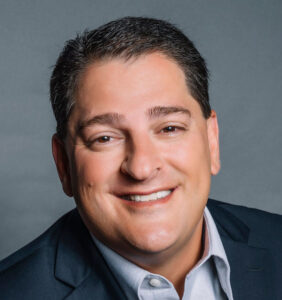Organizations topping this year’s Most Admired for HR list—a ranking of the world’s standout HR functions recalibrated from Korn Ferry and Fortune‘s World’s Most Admired Companies research—represent different industries and revenues and have divergent strategies for people and business success. However, those who have consistently risen through the ranks share some approaches to today’s fast-paced evolution of the world of work, including an emphasis on culture transformation.
Culture is a priority for many top performers on the Most Admired for HR rankings, Laura Manson-Smith, global leader of Organization Strategy Consulting at Korn Ferry, recently wrote for HR Executive. In interviews with senior executives for the project, Manson-Smith says, Korn Ferry determined that top-ranking organizations prioritize talent in a way that extends beyond financial or technological investments.
“It encompasses cultivating a company culture that nurtures growth, values talent and empowers individuals to collectively propel the company toward excellence,” she says.
Take, for instance, fourth-ranked Advanced Micro Devices, a global semiconductor leader. Just three years ago, AMD ranked 48th on Most Admired for HR; it broke into the top 10 in 2022 and continued to climb. How did the company do it?
See the full list: 2024 Most Admired for HR
More about this list: Most Admired for HR: The top 50 companies this year
HR’s emphasis in recent years has been less on programs and more on values, says Robert Gama, senior vice president, CHRO and community officer at AMD. Namely, he credits AMD’s intentional culture transformation with driving its people success.
“We wanted to build culture by design and not by default,” he says.
Building a framework for culture transformation
Gama joined AMD in 2013 and, five years later, took on the CHRO role, quickly getting to work with the leadership team to uncover “who we are, what we are and what we aspire to be.” Today, the company has about 28,300 employees.
He says he looked to the McKinsey 7s Model for inspiration, which places shared values at the core of organizational effectiveness.

“You can’t have any other change—systems, structures, staff, skills—until you know exactly who you are,” Gama says.
That goal led to the development of several simple organizational priorities, including: Build great products, drive deep customer relationships, and simplify everything we do. Putting those aims into action necessitated a new leadership framework, Gama notes.
“Culture is an output of leadership behavior,” he says, a reality that prompted the leadership team to delineate such behaviors—such as being direct, humble, innovative and collaborative, with a strong drive for results and a sense of urgency—and a strategy to have them permeate the workforce.
“We became very clear on what the behaviors looked like in action and how we were going to drive them across the organization,” Gama says. “And that became the roadmap for all our talent decisions.”
Keeping momentum going through learning, listening
Once the framework was in place, Gama says, behavior change started to “cascade” through the organization, driven by an intentional commitment to capabilities like continuous learning.
For instance, leaders, including CEO and chair Lisa Su, modeled how the workforce should always think about “the next 5%.”

“In the spirit of continuous learning, leaders started to ask questions around: ‘What’s the next 5%? ’ ” Gama says. “It started to force a dialogue across the entire company of ‘yes, and’ … how we can continue to push our boundaries of what is possible.”
Employee feedback has been critical to that effort.
“Both giving and receiving,” Gama adds.
As “incremental” progress built, data became particularly key.
“We use data to measure everything,” he says, noting Su has a master’s and Ph.D in electrical engineering from MIT. “Data helps take the emotion out of critical decisions. It’s an equalizer. We, as an HR function, have become extremely data-driven.”
The organization’s annual engagement survey provides a deep pool of that data, exploring employee sentiment toward topics like pride in the company, willingness to recommend it and personal fulfillment. When Su joined as CEO in 2015, AMD’s engagement score—compared to other high-performing tech companies—was around the 50th percentile. Leveraging data to deliberately respond to employee feedback from the survey, the organization saw consistently higher scores, breaking into the 90th percentile in 2020—which it has stayed at or above since.
Some of the organization’s “biggest, most innovative programs,” Gama says, are a result of leadership listening and responding to feedback from the survey—recharge days to support employee wellness and the return of the Employee Stock Purchase Plan model, for instance.
“The data allowed us to really hone in on the care-abouts in our culture and from our employees,” he says, noting AMD has since expanded its listening efforts to include surveys on onboarding and the new hire process, along with total rewards.
Data from employee surveys also sheds light on the potential of continuing to invest in manager effectiveness. A number of questions on the engagement survey, Gama says, center on manager quality—such as their ability to help employees find work/life balance or to provide effective feedback—and such scores have been consistently “exceptionally high.”
“We recognized the power of our leadership relationships were our secret sauce, and we had to leverage that,” Gama says, noting leadership doubled down on training, assessments, succession planning—and empowering managers to “make the right assessments” for their employees, including about return-to-office.
Focusing on manager effectiveness, he says, ties in to the company’s overall values-based emphasis.
“Trust is at the forefront of everything we do here. We had to focus on how we’re going to build upon those trusting relationships between managers and employees, executives and leaders,” he says. “To be faster, to be more nimble, we have to lean on collaboration—it’s not just a nice-to-have; it’s a business imperative.”


